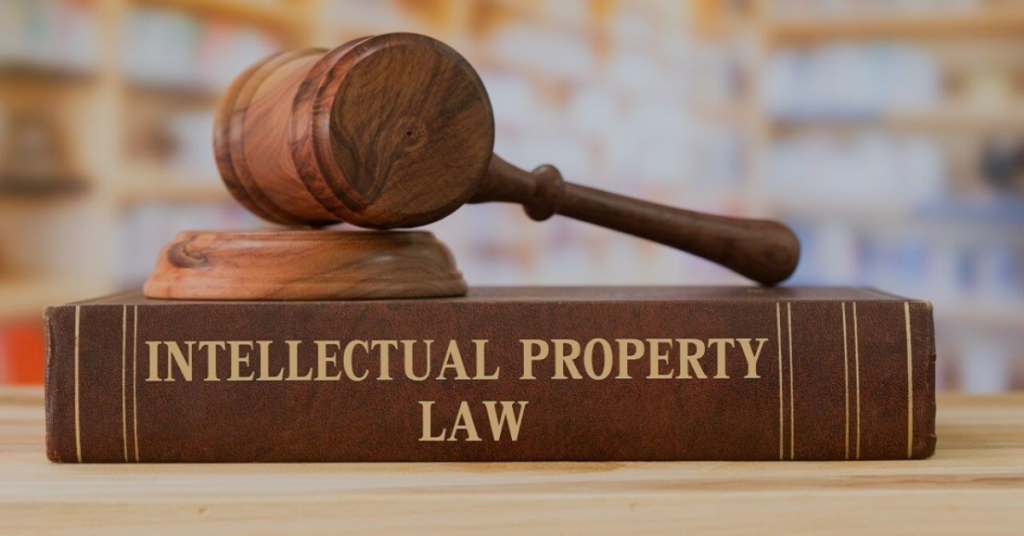General Power of Transfer and Withdrawal under the Civil Procedure Code, 1908
Introduction
The Civil Procedure Code, 1908 (CPC) is a procedural law governing the administration of civil proceedings in India. While the CPC primarily deals with the procedures related to suits, execution of decrees, and other related matters, it also implicitly touches upon the concepts of transfer and withdrawal of cases. This article aims to provide a comprehensive overview of the general power of transfer and withdrawal of suits and proceedings under the CPC, highlighting the relevant sections and judicial interpretations within the context of Indian law.
Transfer of Cases under the CPC
The power to transfer cases is primarily governed by Sections 22 to 25 of the CPC. These sections aim to ensure that justice is not only done but also seen to be done, by allowing for the transfer of cases where circumstances warrant it.
1. Section 22: Power to Transfer Suits Which May be Instituted in More Than One Court
Section 22 deals with situations where a suit can be instituted in multiple courts. It states that where a suit may be instituted in any one of two or more courts, and the defendant, after notice to the other parties, applies to have the suit transferred to one of the other courts, the High Court must determine in which of such courts the suit shall proceed.
-
Key Elements:
- The suit must be capable of being instituted in more than one court.
- The defendant must apply for the transfer.
- Notice must be given to all other parties.
- The High Court decides on the transfer.
-
Purpose: This section is designed to prevent multiplicity of litigation and to consolidate proceedings in a single, convenient court. It also aims to prevent the plaintiff from choosing a court that might unduly prejudice the defendant.
2. Section 23: To What Court Application Lies
Section 23 clarifies which court has the power to entertain an application for transfer under Section 22.
-
Sub-section (1): Where the several courts referred to in Section 22 are subordinate to the same High Court, the application shall be made to the High Court.
-
Sub-section (2): Where such courts are subordinate to different High Courts, the application shall be made to the High Court to which the court in which the suit was first instituted is subordinate.
-
Practical Application: This section provides a clear hierarchy for determining the appropriate High Court to hear a transfer application, depending on the jurisdiction of the courts involved.
3. Section 24: General Power of Transfer and Withdrawal
Section 24 provides a broader and more discretionary power to the High Court and the District Court to transfer or withdraw suits.
-
Sub-section (1): On the application of any of the parties and after notice to the parties and after hearing such of them as desire to be heard, or of its own motion without such notice, the High Court or the District Court may at any stage—
-
(a) transfer any suit, appeal or other proceeding pending before it for trial or disposal to any court subordinate to it and competent to try or dispose of the same, or
-
(b) withdraw any suit, appeal or other proceeding pending in any court subordinate to it, and—
- (i) try or dispose of the same; or
- (ii) transfer the same for trial or disposal to any court subordinate to it and competent to try or dispose of the same; or
- (iii) retransfer the same for trial or disposal to the court from which it was withdrawn.
-
-
Scope and Interpretation:
- Wide Discretion: This section grants broad discretionary powers to the High Court and the District Court.
- "At any Stage": The transfer or withdrawal can occur at any stage of the proceeding.
- Subordinate Courts: The power extends to cases pending in courts subordinate to the High Court or District Court.
- Competent Court: The transferee court must be competent to try the suit.
- Notice Requirement: While the court can act suo moto (on its own motion), it generally requires notice to the parties and an opportunity to be heard.
-
Grounds for Transfer: The grounds for transfer under Section 24 are not explicitly defined but typically include:
- Reasonable apprehension of bias or prejudice.
- Convenience of the parties and witnesses.
- Questions of law are complex and require specialized knowledge.
- Expeditious disposal of the suit.
- For example, in Maneka Sanjay Gandhi v. Rani Jethmalani (AIR 1979 SC 468), the Supreme Court transferred a case to ensure a fair trial and prevent any apprehension of bias.
4. Section 25: Power of Supreme Court to Transfer Suits, etc.
Section 25 vests the Supreme Court with the power to transfer cases from one High Court to another or from a civil court in one state to a civil court in another state.
- Grounds: The Supreme Court can exercise this power if it is satisfied that such an order is necessary for the ends of justice.
- Procedure: The application must be made by a party to the suit and must be supported by an affidavit.
- Significance: This section is crucial for ensuring justice in cases with inter-state implications or where there is a potential for conflicting judgments from different High Courts.
Withdrawal of Suits under the CPC
The CPC also deals with the withdrawal of suits by the plaintiff. Order XXIII Rule 1 outlines the conditions and consequences of withdrawing a suit.
Order XXIII Rule 1: Withdrawal of Suit or Abandonment of Part of Claim
-
Sub-rule (1): At any time after the institution of a suit, the plaintiff may, as against all or any of the defendants, withdraw his suit or abandon part of his claim.
-
Sub-rule (2): Where the Court is satisfied—
- (a) that a suit must fail by reason of some formal defect, or
- (b) that there are sufficient grounds for allowing the plaintiff to institute a fresh suit for the subject-matter of a suit or part of a claim, it may, on such terms as it thinks fit, grant the plaintiff permission to withdraw from such suit or abandon such part of a claim with liberty to institute a fresh suit in respect of the subject-matter of such suit or such part of the claim.
-
Sub-rule (3): Where the plaintiff withdraws from a suit, or abandons part of a claim, without the permission referred to in sub-rule (2), he shall be liable for such costs as the Court may award and shall be precluded from instituting any fresh suit in respect of such subject-matter or such part of the claim.
-
Key Aspects and Interpretation:
- Plaintiff's Right: The plaintiff has an inherent right to withdraw a suit at any time.
- Formal Defect: If the court is satisfied that the suit is bound to fail due to a formal defect (e.g., improper valuation, misjoinder of parties), it can grant permission to withdraw with liberty to file a fresh suit.
- Sufficient Grounds: "Sufficient grounds" are interpreted broadly and may include discovery of new evidence, change in circumstances, or any other reason that justifies allowing a fresh suit.
- Costs: If the plaintiff withdraws without permission, they are liable for costs.
- Bar to Fresh Suit: Withdrawal without permission bars a fresh suit on the same cause of action.
- Example: In Vrajlal Manilal & Co. v. N.V. Abdullahbhai & Co. (AIR 1968 Guj 192), the court elaborated on what constitutes a "formal defect" and the conditions under which permission to withdraw with liberty can be granted.
Distinction Between Transfer and Withdrawal
- Transfer: Involves shifting a case from one court to another. The case continues in the transferee court from the stage it had reached in the transferor court. Transfer is generally sought due to jurisdictional issues, convenience, apprehension of bias, or to consolidate related cases.
- Withdrawal: Involves the plaintiff discontinuing the suit. The suit is terminated in the court where it was instituted. The plaintiff may or may not have the liberty to file a fresh suit on the same cause of action, depending on whether permission was granted by the court.
Principles Governing Transfer and Withdrawal
Several principles guide the courts when considering applications for transfer and withdrawal:
- Ends of Justice: The paramount consideration is whether the transfer or withdrawal will serve the ends of justice. This includes ensuring a fair trial, preventing prejudice, and facilitating the efficient resolution of disputes.
- Convenience: The convenience of the parties, witnesses, and the court is a significant factor. This includes considering the location of evidence, the cost of travel, and the availability of legal representation.
- Apprehension of Bias: A reasonable apprehension of bias or prejudice on the part of the presiding judge is a valid ground for transfer.
- Formal Defects: The presence of formal defects that render the suit unmaintainable justifies allowing withdrawal with liberty to file a fresh suit.
- No Vexatious Litigation: The courts will not allow the transfer or withdrawal to be used as a tool for vexatious litigation or to harass the defendant.
Burden of Proof
The burden of proof generally lies on the party seeking the transfer or withdrawal. They must demonstrate that the circumstances warrant the exercise of the court's discretion.
Conclusion
The power of transfer and withdrawal under the Civil Procedure Code, 1908, is a crucial mechanism for ensuring fair and efficient administration of justice. While Section 24 provides the High Court and District Court with broad discretionary powers to transfer or withdraw suits, Order XXIII Rule 1 governs the plaintiff's right to withdraw their own suits. The exercise of these powers is guided by principles of justice, convenience, and the prevention of abuse of process. Courts carefully consider the circumstances of each case to ensure that the transfer or withdrawal serves the ends of justice and promotes the effective resolution of disputes. Understanding these provisions is essential for legal practitioners and anyone involved in civil litigation in India.




